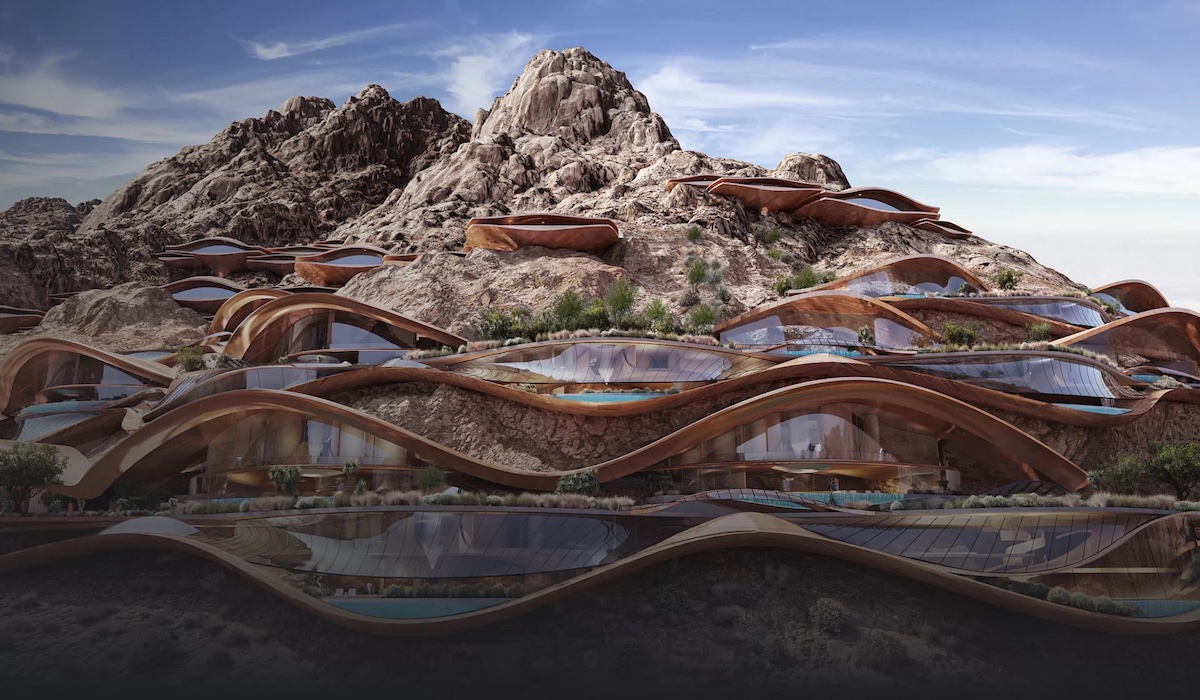Saudi Arabia first announced its ambitious plan to build a $500 billion megacity called Neom in 2017 and by next year it’s expected to partially open. Neom, which means “new future” in a combination of Arabic and Greek, is part of the kingdom’s Vision 2030 strategy to diversify its economy and reduce its dependence on oil while creating a hub for innovation, sustainability and tourism. But the project has not been without controversy.
Here’s how Neom explains Neom …
Neom is expected to cover an area of over 10,000 square miles and to have its own legal system, tax regime and social norms – independent of the rest of Saudi Arabia – and it will consist of four main regions: The Line, Trojena, Oxagon and Sindalah.
The Line

The Line is a linear smart city that will stretch for 105+ miles along the Red Sea coast, connecting the other regions of Neom. The Line will have no cars, roads or carbon emissions, and will run on 100% renewable energy. Residents are also expected to have “unparalleled access to nature” in “diverse open spaces, suspended on multiple levels.” There will be a separate level for pedestrians, transportation and infrastructure, and residents will be within a five minute walk or 20 minute high-speed train ride of everything they’ll need.
Trojena

Trojena is the mountain region of Neom, located 50 kilometers from the Gulf of Aqaba coast. It has elevations ranging from 4,900 to 8,500 feet above sea level and covers an area of nearly 23 square miles. Trojena has a year-round moderate climate that is cooler than the rest of the region and experiences sub-zero winter temperatures and snow. It will offer alpine and adventure sports, as well as health and wellness facilities, integrated into the natural landscape. Trojena will also feature a cosmic gate for stargazing, a discovery tower for living in the clouds, and an amphitheater for cultural events.
Oxagon

Oxagon is a floating industrial city that will be located on the southwest corner of Neom, on the coast of the Red Sea. Oxagon will be an octagonal structure that will span about 4.5 miles in diameter, making it the largest floating structure in the world. It will have an integrated port, a logistics center and a research and innovation campus. Oxagon will be powered by 100% renewable energy and will benefit from its strategic location near the Suez Canal, through which 13% of global trade passes.
Sindalah

Sindalah is a luxury island destination in the Red Sea that will be part of Neom’s tourism sector. Sindalah will have a man-made lake, a beach club, a yacht club, a spa and wellness center, a golf course, and 38 culinary offerings. Sindalah will allow visitors to explore the rich marine life and biodiversity of the Red Sea, which has one of the world’s most beautiful coral reserves. It will also come with hundreds of super lux hotel rooms and apartments. Sindalah is expected to be the first part of Neom to be complete, and it is due to open its doors in 2024.
Neom claims to be a “blueprint for tomorrow,” in which humanity progresses without compromise to the health of the planet. However, the project has also faced criticism and controversy over its environmental impact, its human rights violations, its technological feasibility and its economic viability.
Some environmentalists have questioned how Neom can achieve its sustainability goals while building massive structures in fragile ecosystems and consuming vast amounts of water and energy.
Some activists have also denounced the forced eviction of the Huwaitat tribe from their ancestral lands to make way for Neom, as well as the killing of some tribal members who resisted or protested against the project.
Some experts have also doubted whether Neom can attract enough investors, residents and tourists to justify its huge cost, and whether it can deliver on its futuristic promises without compromising on security or privacy. And some question the feasibility of the design itself.
Neom is expected to be completed by 2030, with some phases opening earlier than others. Whether it will succeed in becoming a new model for urban living or end up as a failed utopia remains to be seen.
Here’s a video Neom released in January, showing its progress:



